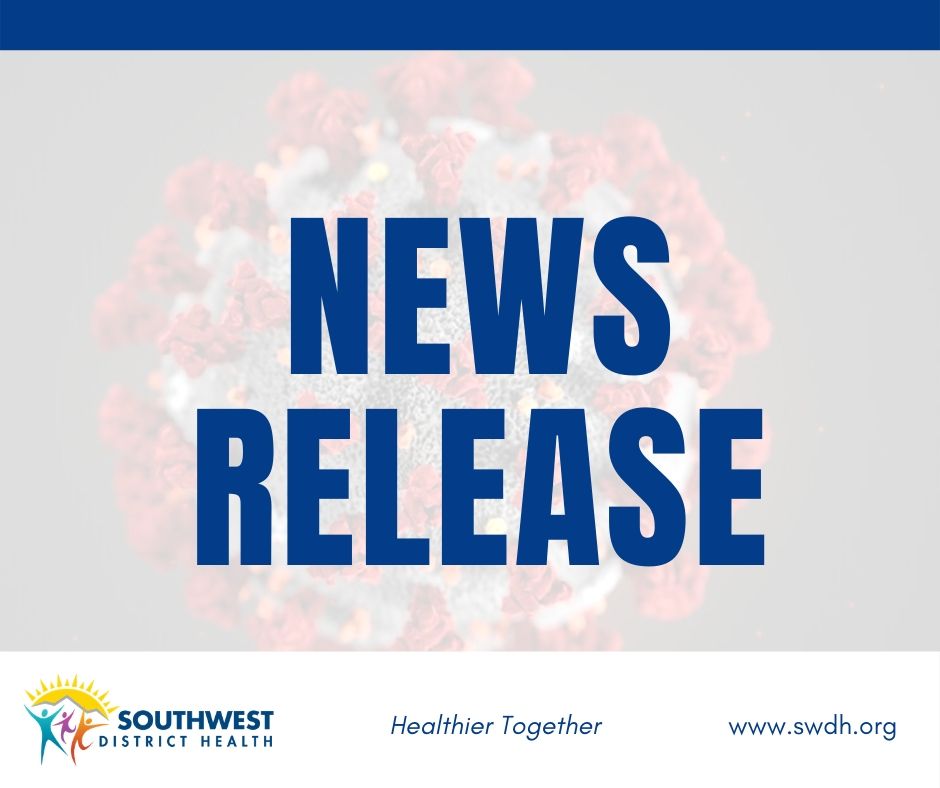FOR IMMEDIATE RELEASE
CYANOBACTERIA PUBLIC HEALTH ADVISORIES LIFTED FOR HELLS CANYON RESERVOIR, BROWNLEE RESERVOIR AND LAKE LOWELL
Southwest District Health, in conjunction with the Idaho Department of Environmental Quality (DEQ), has lifted the Cyanobacteria Health Advisory issued on August 8, 2022 for Hells Canyon Reservoir, the Cyanobacteria Health Advisory issued on August 5, 2022 for Brownlee Reservoir, and the Cyanobacteria Health Advisory issued on September 2, 2022 for Lake Lowell. While there may still be some ongoing cyanobacteria presence, the recreation season has ended and risk of human exposure has been greatly reduced. DEQ officials monitor cyanobacteria and associated toxins where cyanobacteria harmful algal blooms (HABs) are present. A recent sample from Hells Canyon Reservoir on October 14th was below the human recreation threshold for microcystin. A second confirmation sample was not collected. Samples were not collected from Brownlee Reservoir or Lake Lowell.
Other blooms may exist on these waterbodies that have not been reported to DEQ or the public health district. Water users should always exercise caution around water bodies with visible slime or surface scum or a foul odor. High concentrations of toxin-producing cyanobacteria may cause illness to both humans and animals. Report any concerns to DEQ at 208.373.0550.
It is best to avoid direct contact with water affected by a bloom. If you choose to fish in a potentially affected waterbody, wear protective clothing such as gloves or waders, and wash your hands thoroughly with clean water. There have been no reports of people becoming sick from eating fish caught during a bloom. Information about the risk of eating fish from affected waters is limited. However, fish fillets are less likely to accumulate toxins compared to other parts of the fish. If you decide to eat fish from affected waters remove the fat, skin, and organs before cooking or freezing, and only eat the muscle tissue. Avoid cutting into organs. Rinse the fillets with clean water before cooking or freezing.
Dogs are more likely to be exposed to cyanotoxins from drinking contaminated water, swallowing water while swimming and retrieving a ball or stick, and from licking cyanobacteria from their fur. Some animals will be exposed by eating mats of cyanobacteria or dead animals, such as fish, found near the bloom or by retrieving waterfowl that might have cyanobacteria on their feathers after swimming through a bloom. Carry clean, potable water for your dogs to drink when recreating around a body of water with a cyanobacterial bloom and keep them on-leash if they can’t resist eating tempting items. If your dog comes into contact with suspicious water immediately wash the dog off with clean water. Call your veterinarian, or the ASPCA Animal Poison Control Center at 1-888-426-4435 or the Pet Poison Helpline at 1-855-764-7661 (note there is a fee for these calls).
The public is advised to use caution as harmful blooms may still persist. Humans and their pets should stay out if in doubt to the presence of harmful blooms.
For more information about harmful algal blooms, visit DEQ’s website at https://www.deq.idaho.gov/water-quality/surface-water/cyanobacteria-harmful-algal-blooms/ or DHW’s website at https://www.gethealthy.dhw.idaho.gov/recreational-water-health-advisories.
# # #
Media Contacts:
DEQ media contacts:
Anna Marron
208.373.0427
Anna.Marron@deq.idaho.gov
Dani Terhaar
208.373.0274
Dani.Terhaar@deq.idaho.gov
SWDH media contacts:
Ashley Anderson
208.455.5413
Ashley.Anderson@phd3.idaho.gov
Katrina Williams
208.455.5317
Katrina.Williams@phd3.idaho.gov
